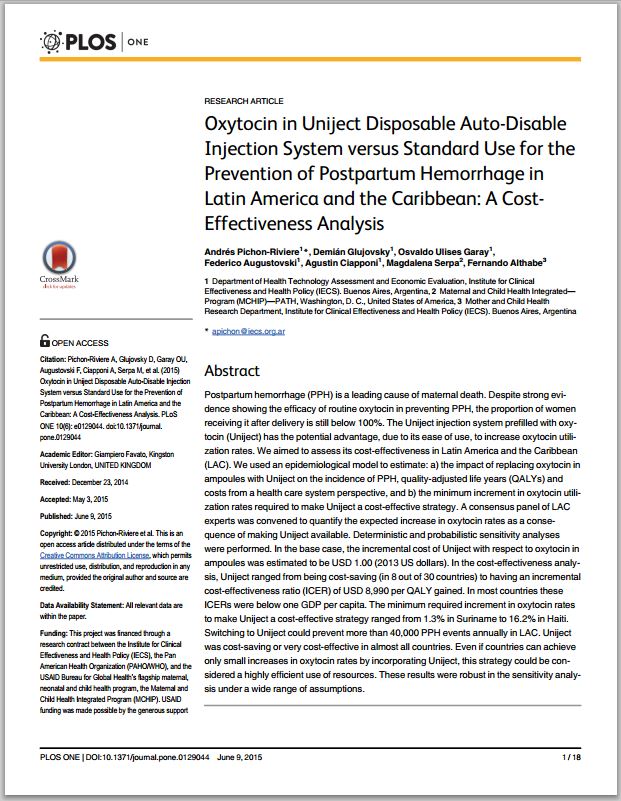Publish Date: June 2015
Author: Andrés Pichon-Riviere, Demián Glujovsky, Osvaldo Ulises Garay, Federico Augustovski, Agustin Ciapponi, Magdalena Serpa, Fernando Althabe
Despite strong evidence showing the efficacy of routine oxytocin in preventing postpartum hemorrhage (PPH), the proportion of women receiving it after delivery is still below 100%. The Uniject injection system prefilled with oxytocin (Uniject) has the potential advantage, due to its ease of use, to increase oxytocin utilization rates.
This open access, MCSP co-authored article in PLOS ONE aims to assess its cost-effectiveness in Latin America and the Caribbean (LAC). The authors used an epidemiological model to estimate: a) the impact of replacing oxytocin in ampoules with Uniject on the incidence of PPH, quality-adjusted life years (QALYs) and costs from a health care system perspective; and b) the minimum increment in oxytocin utilization rates required to make Uniject a cost-effective strategy.
The authors conclude that switching to Uniject could prevent more than 40,000 PPH events annually in LAC. Uniject was cost-saving or very cost-effective in almost all countries. Even if countries can achieve only small increases in oxytocin rates by incorporating Uniject, this strategy could be considered a highly efficient use of resources. These results were robust in the sensitivity analysis
under a wide range of assumptions.
Oxytocin in Uniject Disposable Auto-Disable Injection System versus Standard Use for the Prevention of Postpartum Hemorrhage in Latin America and the Caribbean: A Cost-Effectiveness Analysis (538 downloads )

